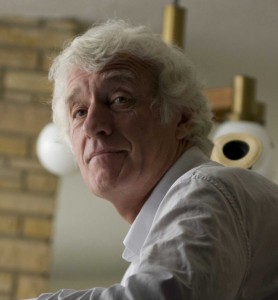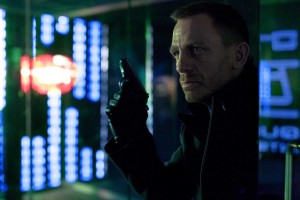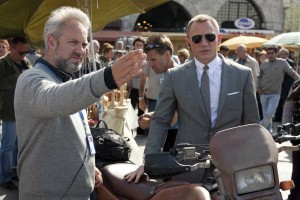![]()
 Shooting Skyfall, the new James Bond movie film that is shattering worldwide box office records, “was a bit like solving a jigsaw puzzle,” said award-winning director of photography Roger Deakins. “We all had a lot of fun making it, but when you break it down, it was quite a complex movie,” he said. “Not only was each of the many big set pieces complicated, we were often shooting out of sequence, making it harder to maintain continuity.”
Shooting Skyfall, the new James Bond movie film that is shattering worldwide box office records, “was a bit like solving a jigsaw puzzle,” said award-winning director of photography Roger Deakins. “We all had a lot of fun making it, but when you break it down, it was quite a complex movie,” he said. “Not only was each of the many big set pieces complicated, we were often shooting out of sequence, making it harder to maintain continuity.”
The Skyfall climax, a blazing shoot-out on the Scottish moors between Daniel Craig as Bond and Javier Bardem as the villain Silva, changes in lighting from a sunny afternoon to dusk to evening and culminates in a massive nighttime explosion. “It was shot days or even weeks apart in so many pieces and in so many different places that it became a real technical challenge to make it feel that it’s all part of the same continuous sequence so the audience does not jump out of it.”
The go-to cinematographer for the Coen Brothers on films like True Grit, No Country for Old Men and Fargo, Deakins made a huge leap in scale by lensing what critics have praised as one of the smartest and most spectacular of the 007 films, now celebrating the 50th anniversary of the franchise. Skyfall was directed by Sam Mendes in his first stab at a Bond movie. The British cinematographer has now become a first choice as well for Mendes. He previously collaborated with the director on Jarhead and Revolutionary Road. Skyfall was budgeted at $200 million and took 182 days to shoot. Locations ranged from Turkey and China to England and Scotland. In addition, a lot of the filming took place at London’s historic Pinewood Studios where 31 sets were built on eight soundstages.
 Deakins, known for his skillful lighting, had lots of chances to show his chops on Skyfall. One eye-popping scene takes place in Shanghai, where Bond and a French assassin fight it out on the 59th floor of a sleek office tower. “We scouted Shanghai, but I wanted a lot more control over the action and lighting and it was just not going to happen if we did on location,” the DP recalled. He talked with production designer Dennis Gassner about doing the scene at Pinewood on a glass set lit by giant neon billboards. “It’s all about the reflections. You basically have these two big flashing advertising signs reflecting against the glass windows.” It took months to assemble the signs from thousands of LEDs.
Deakins, known for his skillful lighting, had lots of chances to show his chops on Skyfall. One eye-popping scene takes place in Shanghai, where Bond and a French assassin fight it out on the 59th floor of a sleek office tower. “We scouted Shanghai, but I wanted a lot more control over the action and lighting and it was just not going to happen if we did on location,” the DP recalled. He talked with production designer Dennis Gassner about doing the scene at Pinewood on a glass set lit by giant neon billboards. “It’s all about the reflections. You basically have these two big flashing advertising signs reflecting against the glass windows.” It took months to assemble the signs from thousands of LEDs.
The DP’s crew normally lights a day or two before the shoot, so Deakins can arrive in the morning, consult with the director, and do final adjustments. He has added responsibilities because he is one of the handful of cinematographers who also prefers to operate the camera, save for Steadicam shots. Most scenes are lensed with a single camera, putting the cinematographer in the center of the action. The exceptions are elaborate set pieces. “When the train bursts into the temporary underground MI6 offices, we used 11 cameras because we were only able to do it once,” he noted.

Though he has yet to receive an Oscar, Deakins has received nine Academy Award nominations for best cinematography on films including True Grit, No Country for Old Men and O Brother Where Art Thou. He has been nominated eight times and won two best feature awards from the American Society of Cinematographers for Shawshank Redemption and The Man Who Wasn’t There; and in 2011 he received the group’s lifetime achievement award. He has also received three BAFTAs, the British equivalent of the Oscars, out of six nominations.





